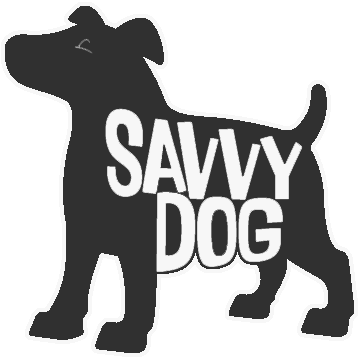Tasha, Come! Tasha, COME! Come ON Tasha! Tasha, COME RIGHT NOW! GET over here...Tasha....RIGHT NOW!
Sit, Cody. Sit. Sit. Sit, Cody. SIT!
Sound familiar? Far too often, this type of "banter" is the primary way we try to communicate with our dogs. It comes naturally to us. For most people in most situations, the go-to method of communicating is verbal. We use words, and if we don't feel we are being heard, we usually use more of them and get louder and louder until we get think we've gotten our point across.
Dogs, on the other hand, don't use words. They don't understand our words until we have taught them what we want them to do when we say single words or short phrases. Their go-to method of communicating is based on visual cues, primarily through body language and position. They also vocalize in the form of barks, howls, growls, whines and yelps that carry significant meaning in their tone. Louder sounds typically indicate danger and can trigger a fight-or-flight response.
Lots of communication - no words!
Our dogs do their best to figure out how to adapt to these communication differences. Even if we do nothing to try and help, they usually learn a few words by accident and watch our physical cues carefully. If we decide to step up and do our part to help bridge these differences, our dogs will learn more, learn faster, pay more attention and our relationship will reap the rewards.
So how do you do your part? That's were the "Training Trifecta" comes in. Effective use of your voice, your body language and silence can help you make "quantum leaps" (a buzzword from my corporate days!) towards bridging the communication gap.
Your Voice
Dogs can learn words and it's important to teach them some. But their natural tendency is to respond more consistently to the tone of your voice.
Easy now...don't yell at me and I'll listen.....!
- Harsh yelling can be confusing and stressful. Many dogs won't even recognize words they know if they are shouted at them. Yelling should be avoided.
- A firm, loud voice can be effective in getting attention in a high distraction environment, but use sparingly.
- A calm, low voice is soothing and puts a dog in a state of mind to listen. At normal volume, this tone is typically the best for giving cues. At low volume, this tone can be very effective at relaxing and helping relieve stress.
- An upbeat, low-medium voice inspires action and movement. It can also be used to distract a dog away from something scary or dangerous.
- An upbeat, high-pitched voice (think baby-talk) also inspires action and movement, but has a tendency to get a dog "amped up". This state of over stimulation lowers a dogs ability to focus and learn, so it's not recommended when teaching a new behavior or trying to curb bad habits like jumping up.
- Whispering can be intriguing to a dog and gets their attention when used at the right times.
Experiment with different tones of voice and notice how they impact your dog's level of engagement.
Your Body Language
A high percentage of dog-to-dog communication is accomplished with body language and body positioning. Dogs are very aware of how other dogs or people are positioned relative to themselves and subtle movements can have significant meaning. The slightest shift of your weight towards an open door can be interpreted as "let's go on out!", whether or not you say the words.
There are whole books written about how dogs communicate with their eyes, mouth, ears, tail and overall body posturing, so I'm not going to try and cover it all in this post. If you're only going to read one book on this topic, I'd suggest On Talking Terms With Dogs: Calming Signals by Turid Rugaas. It's a classic and a fairly quick read, but chock full of great information.
Two things I would like to point out. First, a well-socialized dog is respectful of another's space. Your dog needs to learn that you expect this respect when it comes to your personal space as well. Having a tiny pup climbing all over you may be fun, but it's not so great when that pup weighs 50 lbs and you're trying to eat a snack at the coffee table. Set boundaries and teach your dog when it's OK to snuggle up to you by putting it "on cue". Reward polite behavior from the start and you won't regret it.
Second, using your own body positioning during the training process can be very powerful if used correctly. Shifting your weight to calmly block an entryway while teaching "Wait" is usually much more effective than repeating the cue over and over or jerking a dog back with a leash. You don't want to be rough or bully your dog into position, so make sure you're showing respect for their space as well.
Silence
The most effective speakers and motivators have mastered the power of the well-placed silence. Words can get in the way, creating a constant barrage of noise and impacting the ability of the audience to pay attention and to THINK. Ever been in a class where the audience was "multi-tasking" and the speaker suddenly went silent? It probably only took a few seconds for all eyes to be on them and side conversations to stop.
Remember that analogy when working with your dog, particularly when teaching them something new. In fact, many trainers recommend delaying the introduction of a verbal cue until the dog understands what you're asking them to do via luring, hand signals or "capturing and marking" the desired behavior. Most dogs prefer to focus on your body language vs trying to understand a bunch of gibberish coming out of your mouth that they don't understand.
Pay close attention to how you use words and, don't be afraid to Just. Stop. Talking.




